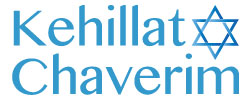Shemot 5780 – Three Themes in Search of a Connection
I don’t usually fret much when writing a d’var. A portion of the reading stands out to me and I work with it, researching, reading and contemplating the topics. Parasha Shemot- while being a rather short Parasha, left me feeling alternately upset and disturbed and then later uplifted. This is not an easy reading to deconstruct.
The first part of the reading introduced the new Pharoh and in spite of the Parasha’s title of Shemot translated to “Names”—the Pharoh is in fact not named. He comes in with no knowledge of the contributions of Joseph and how he saved the country from ruin. In fact he was so out of touch that the first thing he did was enact strict rules and laws against the people in groups that he does not understand.
I had a similarly upsetting experience when my old company was taken over by another that did not understand that much that made our old company pretty great was the flexibility extended to the workers, the supportive culture and the collaboration we exhibited. Suddenly we were told that there was no more working from home, that our IT and other operations support was being outsourced and that we were basically to put up and shut up. The Jews in Egypt didn’t have much choice, at least I was able to leave.
One of Pharoh’s rules impacted the Jewish people immediately: any male child born to the Hebrews was to be put to death (typically thought of us drowning them in the Nile). The midwives who attended Jewish women (it is not clear whether they were Jewish or not) in what has been called one of the first acts of Civil Disobedience—disobeyed the order given by the most powerful man in the most powerful empire of the ancient world simply because it was immoral, unethical and inhuman.
These midwives – named Shifra and Puah not only saved Jewish babies at the time, they became the inspiration many, many years later for a new legal concept—that of the crime against humanity which gave legal substance to the Nuremberg principle that there are orders that should not be obeyed because they are immoral.
The third theme is that great leaders—the example here being Moses—discover that their sense of justice is not reserved for their people alone. There are several examples of Moses witnessing injustices. In one, Moses sees several Medianite shepherds using ‘brute force’ against the daughters of Jethro, preventing them from drawing water for their families. Moses intervenes. He has nothing to do with the conflict and his sense of justice is blind. He feels that justice must be done even if it does nothing to further his personal interests.
According to Rabbi Jonathan Sacks, the “Torah wants to teach that when humanity is being tested, people must stand up for justice and not be swept along in the tides of hatred. People with a conscience can and must be found living under the thumb of the darkest regimes.
Ultimately, the benevolent will go down in the annals of history, not only as people who produced change and brought more good into the world, but also to those who give hope to all, even if their deeds do not come to light until many years after they were gone. Among them we remember the Midwives Shifra and Puah; the righteous gentiles who helped many Jews—especially children—escape from the Nazi efforts to eliminate them; the recent volunteers who went to our borders to try to help with children who were separated from their parents and put into refugee camps—crying for their parents; and the newest members of this group, the lawyers who have gone into Mexico to help those escaping the horrors of Central America only to be trapped in Mexico because our President will not allow them into the country before their scheduled asylum hearings.
The moral of the Parash of Shemot is that when there are tyrants (political, business and otherwise) we can look to those who speak out against their inhumanity and declare enough is enough. We may never know their names, but their righteous deeds–regardless of the identity of the victim—will be immortalized as ‘symbols of the struggle to bring out the hidden good within us.” May we remember them, may we honor them, may we share their stories; may we be them.
This D’var was inspired by the words and writings of Rabbi Jonathan Sacks, Rabbi Eve Posen, Rabbi David Stav, and Rabbi Yael Ridberg
Shabbat Shalom

